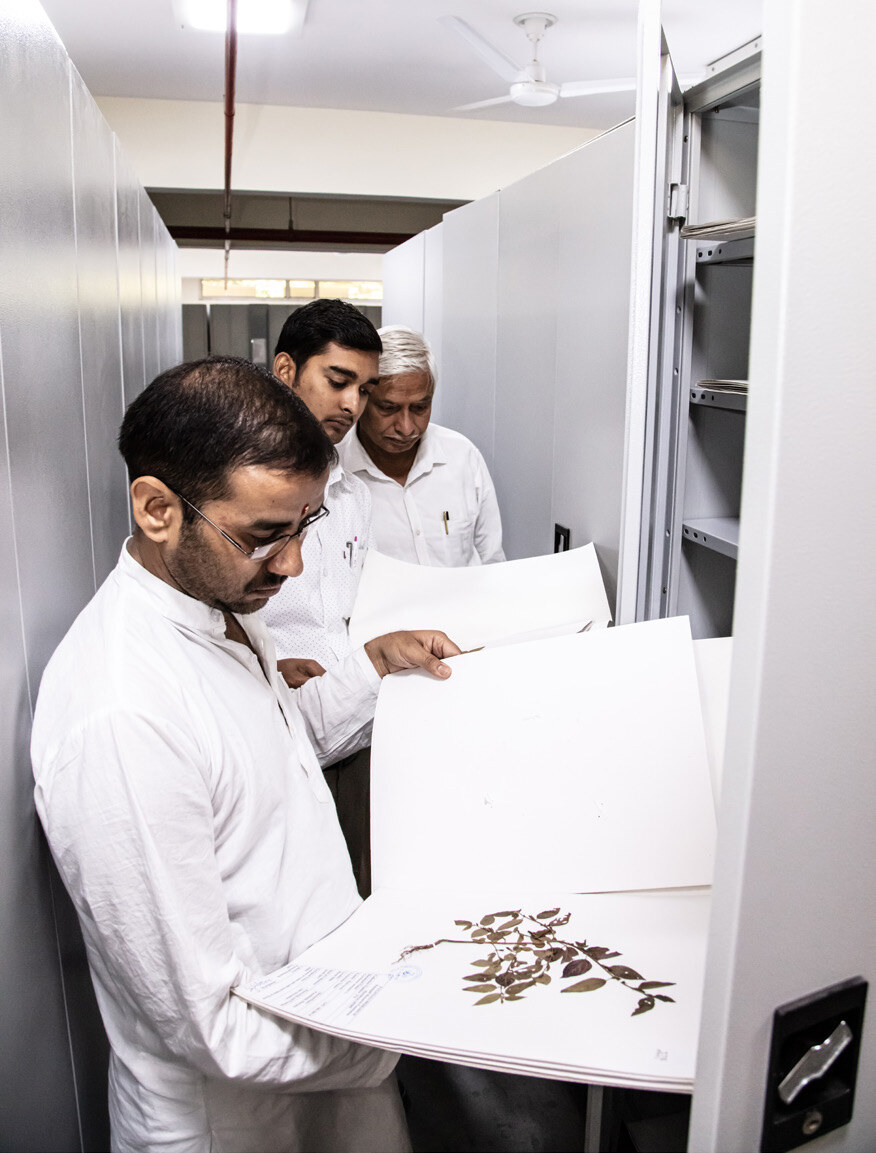Wealth of Food Crops
Wealth of Food Crops
"The art of crop cultivation seeks our attention"
Since 2019, Patanjali Research Foundation has worked on a book incorporating India's current agricultural profile and future possibilities. This book identifies extensive farming dynamics, which provides a plethora of knowledge to agronomists, students, researchers, and farmers. Thus, "Wealth of Food Crops" explores the cultivars of 186 crops of Cereals and Millets, Pulses, Oilseeds, Sugar, Beverages, Spices, Condiments, Fruits, Fiber, and Vegetables. It re-introduces the importance of several crops that are incredibly essential for our nation's farming sector.
Presently, 'Crop Wealth of India, Volumes I-IV' enlightens us about India's rich crop production prowess. Coinciding with the Azadi Ka Amrit Mahotsav, an initiative of the Government of India to celebrate and commemorate 75 years of independence, it systematically educates readers through the volumes listed below.
Crop Wealth of India, Volume I (Cereals & Millets)
The book entitled 'Crop Wealth of India, Volume I (Cereals & Millets)' coinciding with the Azadi Ka Amrit Mahotsav, an initiative of the Government of India to celebrate and commemorate 75 years of independence, provides complete details of 3949 varieties of Cereals & Millets like Rice (Oryza sativa L.), Maize (Zea mays L.), Wheat (Triticum sps.), Sorghum [Sorghum bicolor (L.) Moench], Barley (Hordeum vulgare L.), Oat (Avena sativa L.), Pearl Millet [Cenchrus americanus (L.) Morrone], Finger Millet [Eleusine coracana (L.) Gaertn.], Foxtail Millet [Setaria italica (L.) P.Beauv.], Proso Millet (Panicum miliaceum L.), Kodo Millet (Paspalum scrobiculatum L.), Barnyard Millet (Echinochloa frumentacea Link), Little Millet (Panicum sumatrense Roth) and Buck wheat (Fagopyrum esculentum Moench) developed and cultivated in India by different research institutes, agricultural universities, and other organizations. Furthermore, each crop has been broadly described along with its origin, historical details, distribution, botanical description, economic & medicinal uses, nutritional value, cultivation practices, and cultivars developed to date. Also, in this book, the origin, history, agricultural system, characteristics, its various varieties, diseases, problems in Indian agriculture, and the agricultural situation before and after 1947 of cereals and millets have been described in detail in the introductory chapter.

Crop Wealth of India, Volume II (Pulses, Oilseeds, Sugar and Beverages)
The book entitled 'Crop Wealth of India, Volume II (Pulses, Oilseeds, Sugar and Beverages)' coinciding with the Azadi Ka Amrit Mahotsav, an initiative of the Government of India to celebrate and commemorate 75 years of Independence, provides complete detail of 4031 varieties of Pulse Crops like Green Gram, Horse Gram, Indian Bean, Black Gram, Bengal Gram, Cowpea, Lentil, Kidney Bean, Pigeon Pea, Faba Bean, Garden Pea, Moth Bean; Oilseed Crops like Linseed, Soybean, Coconut, Sunflower, Groundnut, Sesame, Castor, Indian Mustard, Black Mustard, Gobhi Sarson, Karan Rai, Rapeseeds & Mustard, Safflower, Taramira, Niger; Sugar Crops like Sugarcane, Sugar Beet, Tapioca; Beverage Crops like Tea and Coffee developed and cultivated in India by different research institutes, agricultural universities and other organizations. Likewise, each crop has been discussed in detail, highlighting their origin and historical details, distribution, botanical description, economic importance, medicinal & nutritional values, and cultivation practices along their cultivars developed so far.
Crop Wealth of India, Volume III (Spices & Condiments, Fruits)
The book entitled 'Crop Wealth of India, Volume III (Spices & Condiments, Fruits)' coinciding with the Azadi Ka Amrit Mahotsav, an initiative of the Government of India to celebrate and commemorate 75 years of Independence, provides a complete detail of 4407 varieties of Spices & Condiments like Onion, Capsicum, Coriander, Cumin, Garlic, Turmeric, Clove, Ginger, Fennel, Black Pepper, Cardamom, Dill Seeds, Carom, Dalchini, Jaiphal, Black Cumin; Fruits like Indian Gooseberry (Amla), Apple, Banana, Ber, Lime/Lemon, Sweet Orange, Custard apple, Grapes, Guava, Litchi, Mango, Musk Melon, Papaya, Pineapple, Plum, Pomegranate, Strawberry, Walnut, Watermelon, Spota (Chikoo), Apricot, Peach, Pear, Stone Apple, Mulberry, Date Plam, Fig, Karonda, Cherry, Areca Palm, Loquat, Black Plum, Chestnut, Chinese Gooseberry, Raspberry (Rubus sp.), Cashew, etc., developed and cultivated in India by different research institutes, agricultural universities and other organizations. Furthermore, each crop has been discussed in detail, highlighting its origin and historical information, distribution, botanical description, economic importance, medicinal & nutritional values, cultivation practices, and the cultivars developed.
The importance of spices & condiments, fruits, the present book aims to highlight these 17 different spices & condiments and more than 50 diverse fruits that played a meaningful role in our lives.
Crop Wealth of India, Volume IV (Fibers and Vegetables)
The book entitled 'Crop Wealth of India, Volume IV (Fibers and Vegetables)' coinciding with the Azadi Ka Amrit Mahotsav, an initiative of the Government of India to celebrate and commemorate 75 years of Independence, provides complete details of 4044 varieties of Fibers like Cotton, Jute, Sunn Hemp, Roselle, Dhaincha; Vegetables like Amaranth, Apple Guard, Ash Gourd, Bitter Gourd, Bottle Gourd, Brinjal, Broccoli, Cabbage, Carrot, Cauliflower, Cluster Bean, Cucumber, Drumstick Tree, Elephant Foot Yam, Fenugreek, Jackfruit, Knol Khol, Okra, Pointed Gourd, Potato, Pumpkin, Radish, Ridged Gourd, Snake Gourd, Spinach, Sponge Gourd, Sweet Potato, Taro Yam, Tomato, Turnip, White Goosefoot, etc., developed and cultivated in India by different research institutes, agricultural universities and other organizations. Each crop has been discussed in detail, highlighting its origin and historical details, distribution, botanical description, economic importance, medicinal & nutritional values, and cultivation practices along their cultivars developed so far. The significance of fibers and fruits: the present book aims to highlight these 05 different fibers and some non-cultivated vegetables like Asparagus, Arrowroot, Bamboo, Brussels Sprouts, Chayote, Common Purslane, Leek, Lettuce, Lingru, Lotus Root, Spiny Gourd, etc., obtained from a wild source that played a noteworthy role in our regular lives.

